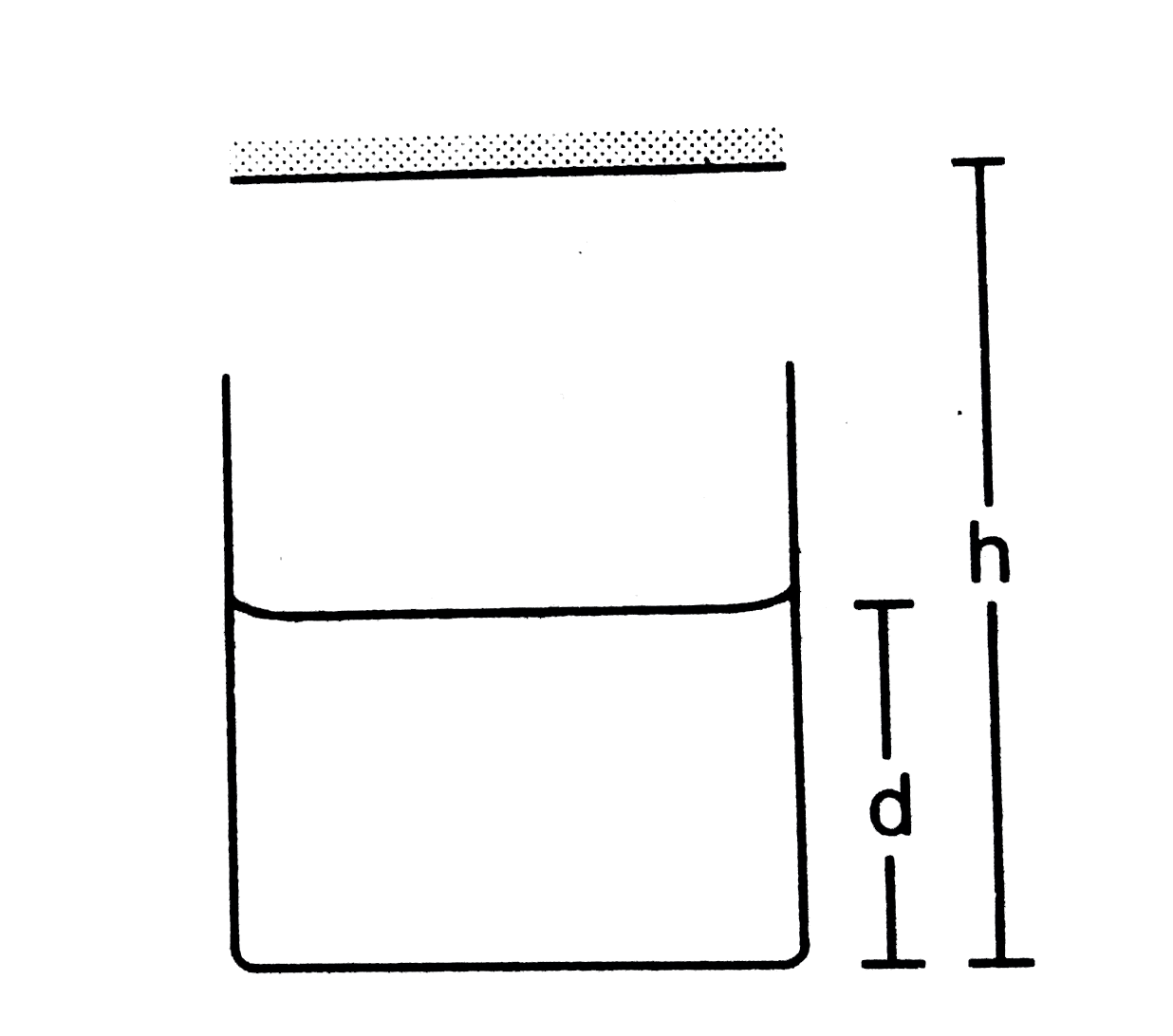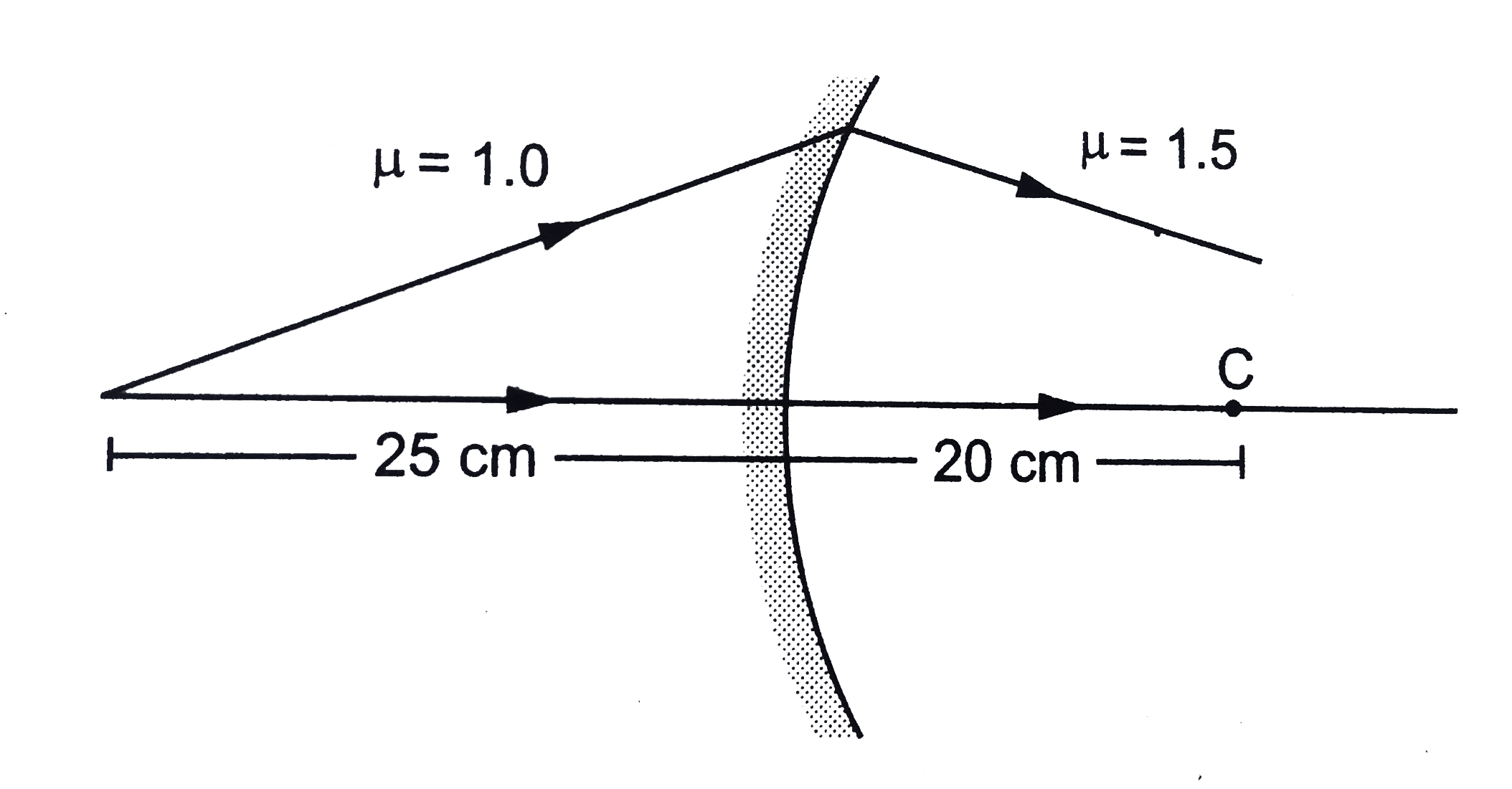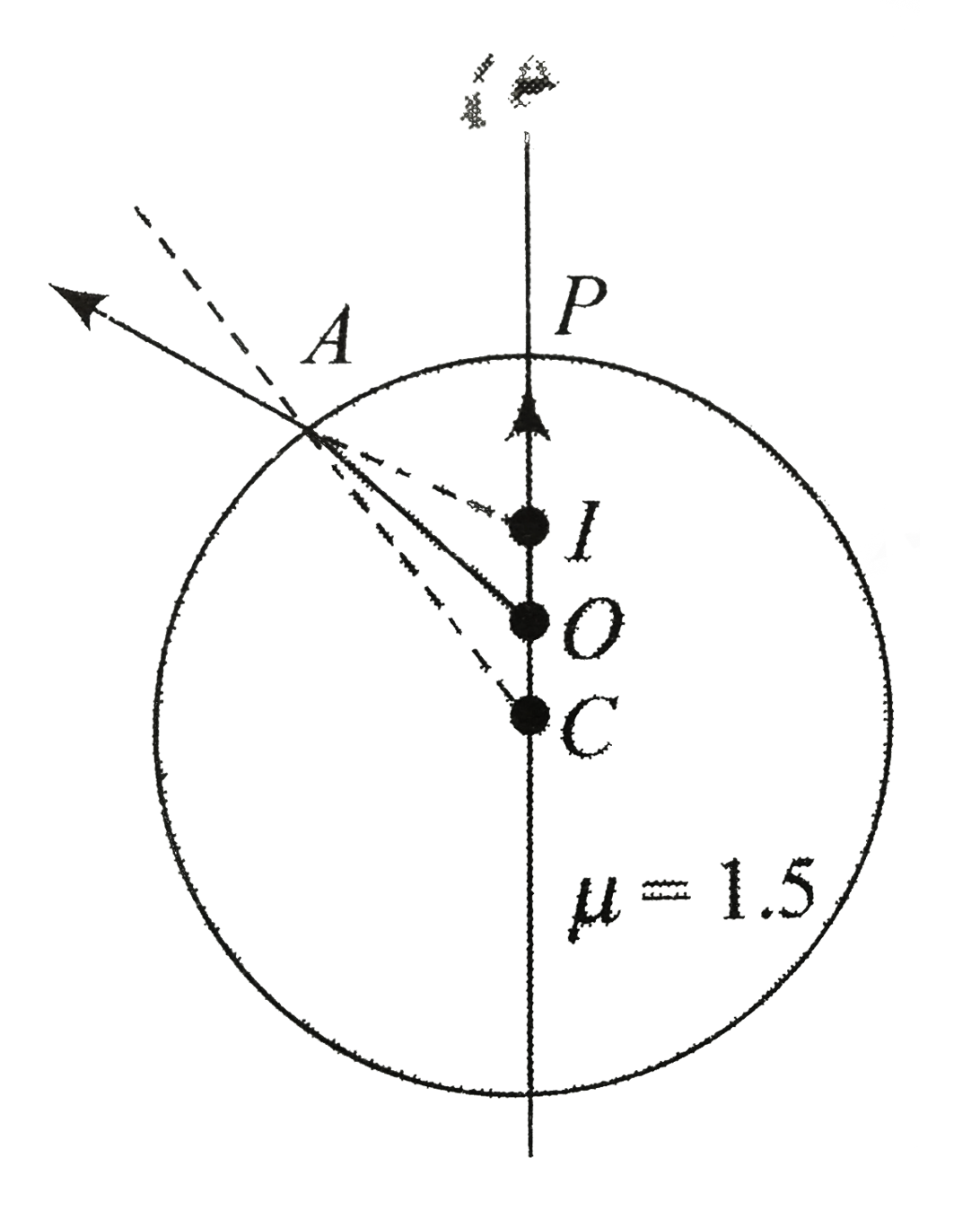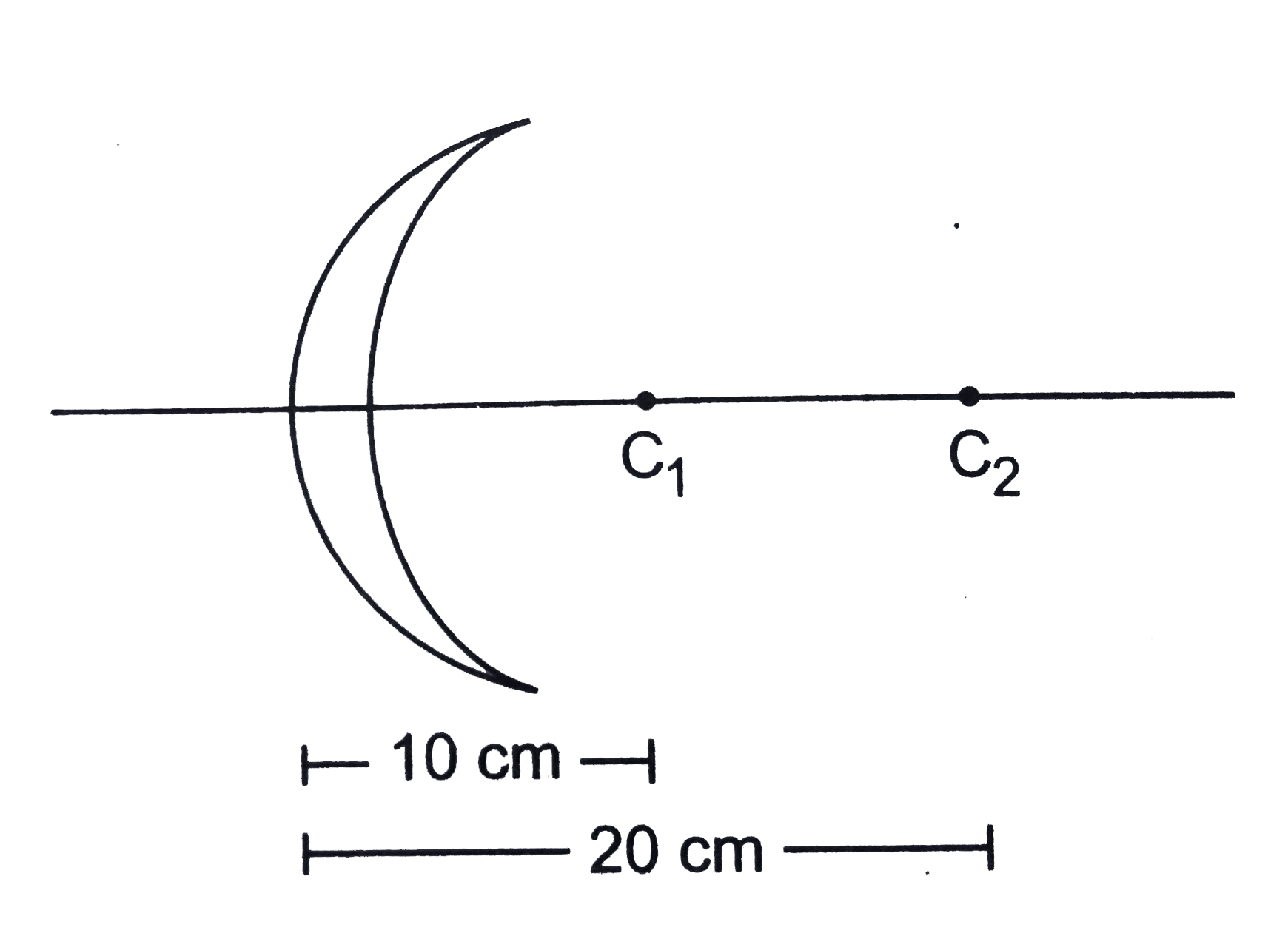Worked out Examples from HC VERMA PHYSICS (ENGLISH) GEOMETRICAL OPTICS for Class 12
| Class 12 | PHYSICS |
| Chapter | GEOMETRICAL OPTICS |
| HC VERMA PHYSICS (ENGLISH) | Worked out Examples |
| Medium | English |
| Academic Year | 2023-2024 |
Question 6
A right prism is to be made by selecting a proper material and the angles A and B (B≤A) as shown in figure. It is desired that a ray of light incident normally on AB emerges parallel to the incident direction after two internal reflection.a. What should be the minimum refractive index μ for this to be possible? b. Forμ=53 is it possible to achieve this with the angle A equal to 60 degrees?View SolutionQuestion 7
A point object O is placed in fornt of a transparent slab at a distance x from its surface. It is seenfrom the other side of he slab by light incident nearlyl normally to the slab. The thickness of the slab is t and its refractive index is μ. Show that the apparent shift in the position of the object is independent of x and find its value.View SolutionQuestion 10
Monochramatic light is incident on the pane interface AB between two media of refractive indices μ1 and μ2(μ2>μ1) at an angle of incidence theta as shown in figure. The angle theta is infinitesimally greater thannte critical angle for the two media so thast total internal reflection takes place. Now, if a transparent slab DEFG of uniform thickness and of refractive inde μ2 is introduced on theinterface (as shown in figure ) , show that for any value of μ2 all light will ultimately be reflected back into medium II.
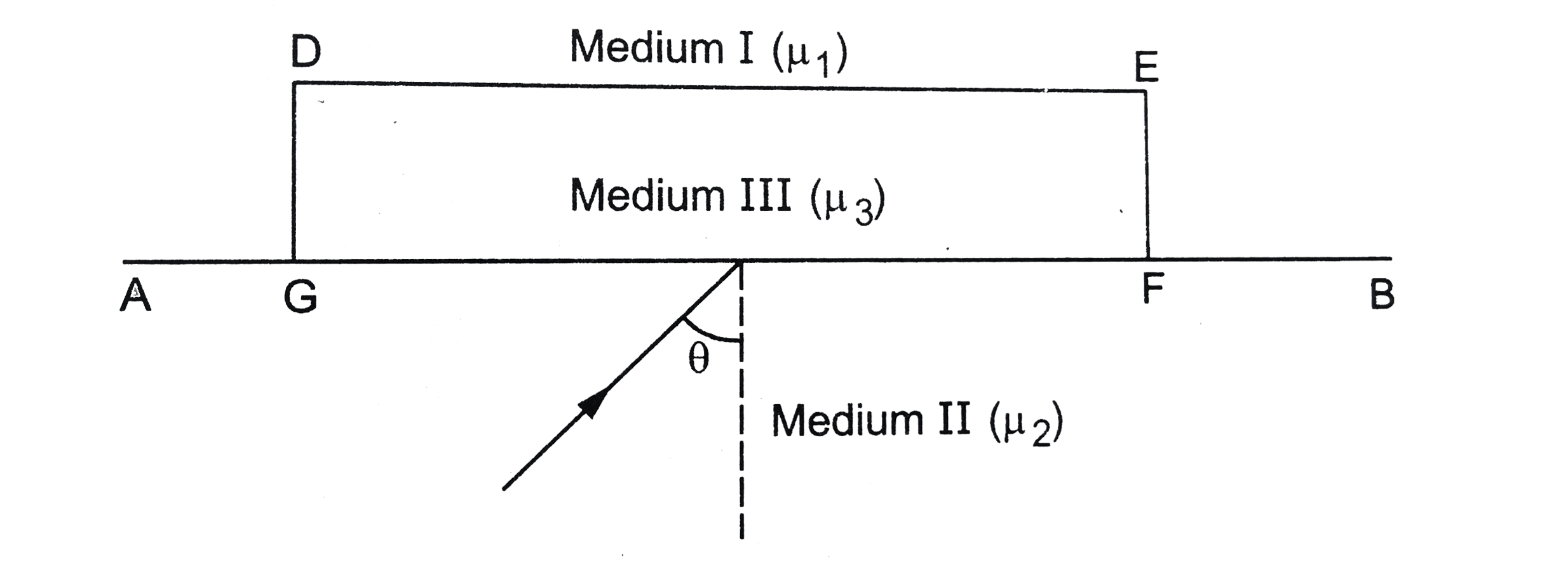 View Solution
View SolutionQuestion 11
A concave mirror of radius 40 cm lies on a horizontal table and water is filled in it upto a height of 5.00 cm. A small dust particle floats on the water surface at a point P vertically above the point of contact of the mirror with the table. Locate the image of the dust particle as seen from a point directly above it. the refractive index of water is 1.33.
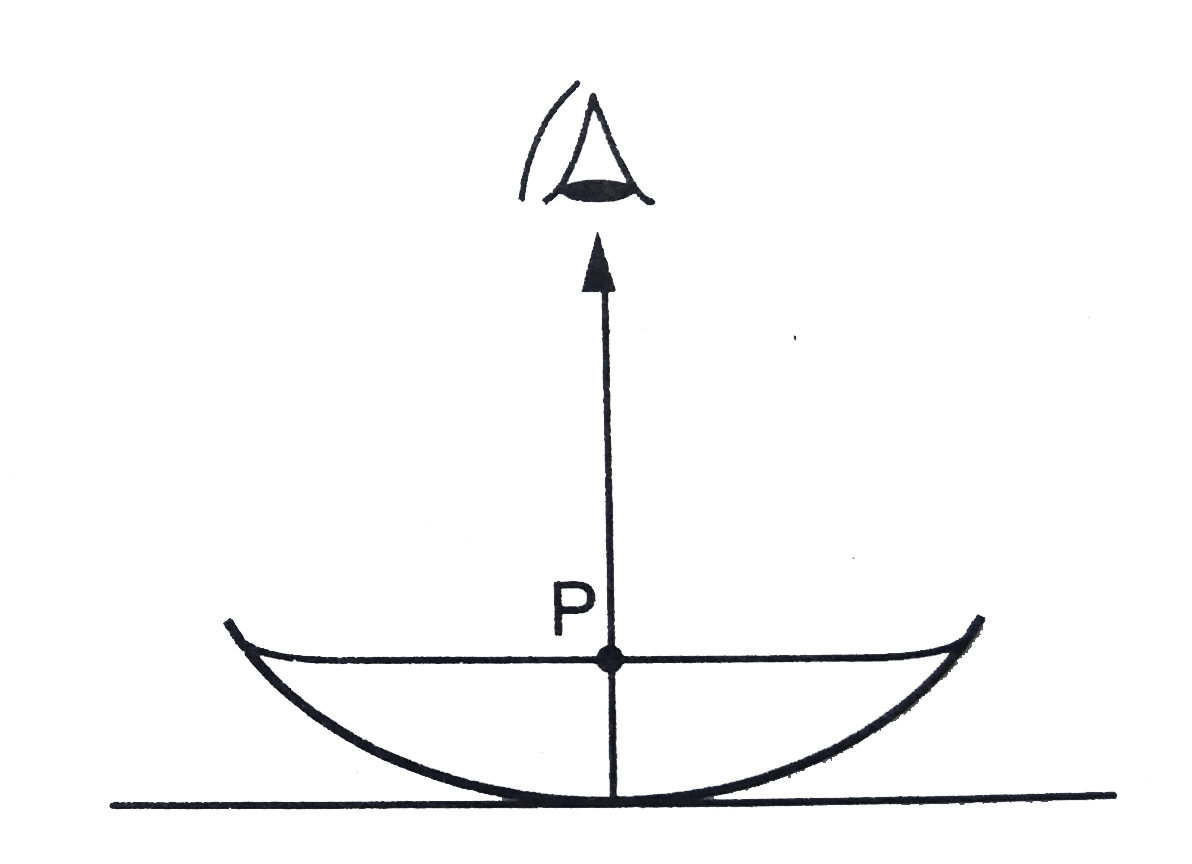 View Solution
View SolutionQuestion 12
An object is placed 21 cm in fron of a concave mirror of radius of curvature 20 cm.A glass slab of thicknes 3 cm and refractive index 1.5 is palced close to the mirror in the space between the object and the mirror. Find the position of the final image fromed. The distance of the nearer surface of the slab from the mirror is 10 cm.
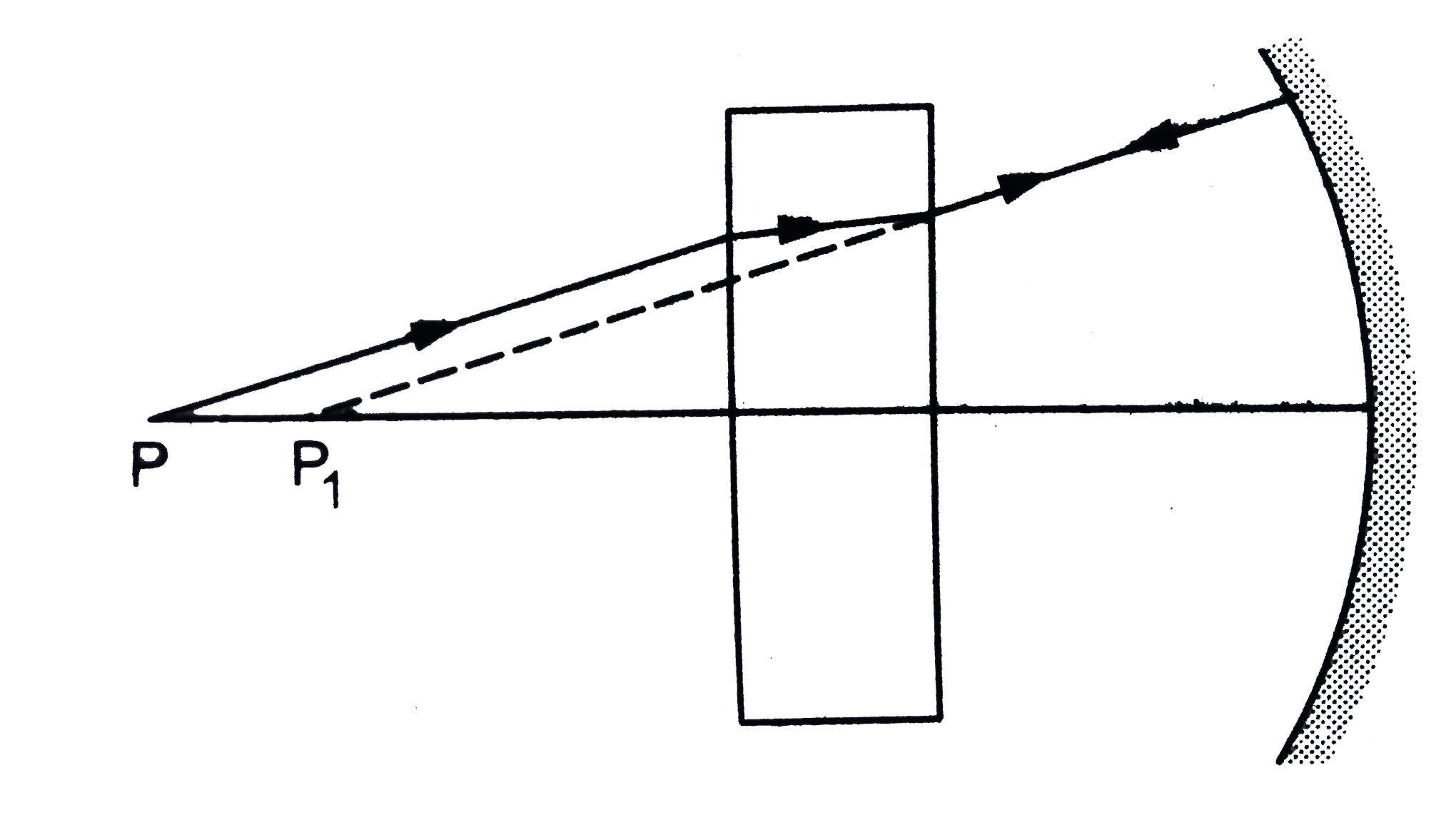 View Solution
View SolutionQuestion 14
Consider the situation shown in figure. Light from a point source S is made parallel by a convex lens L. The beam travels horizontally and falls on an 88∘−88∘−4∘ prism as shown in figure. It passes through the prism symmetrically. The transmitted light falls on a vertical mirror. Through what angle should the mirror be rotated so that an image of S is formed as S itself?
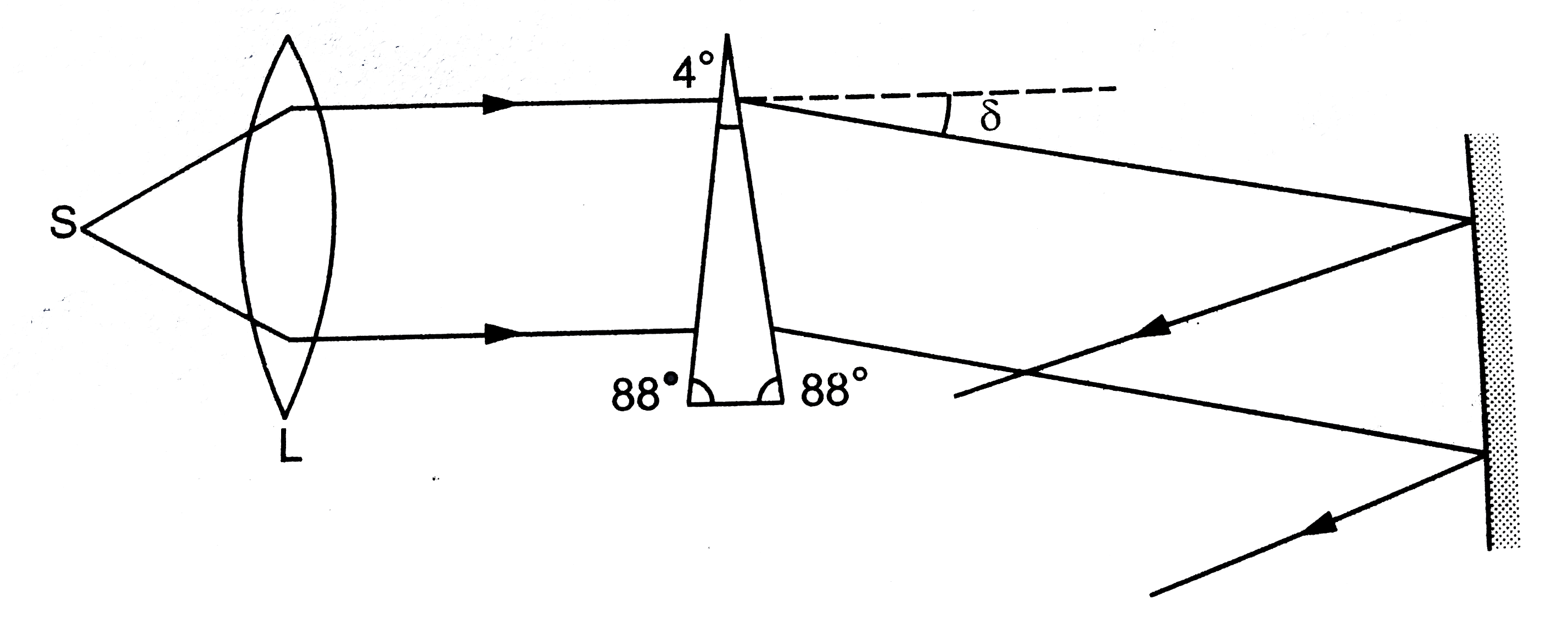 View Solution
View SolutionQuestion 16
One end of a horizontal cylindrical glass rod (μ=1.5) of radius 5.0 cm is rounded in the shape of a hemisphere. An object 0.5 mm high is placed perpendicular to the axis of the rod at a difference of 20.0 cm from the rounded edge. Locate the image of the object and find its height.View SolutionQuestion 18
A parallel bean of light travelling in water (refractive index = 4/3) is refracted by a spherical bubble of radius 2 mm situation in water. Assuming the light rays to be paraxial. i. find the position of the image due to refraction at the first surface and the position of the final image, and ii. draw a ray diagram showing the positions of the images. View SolutionQuestion 21
A converging lens of focal length 15 cm and a converging mirror of focal length 20 cm are placed with their principal axes coinciding. A point source S is placed on the principal axis at a distance of 12 cm from the lens as shown in figure. It is found that the final beam comes out parallel to the principal axis. Find the separation between the mirror and the lens.
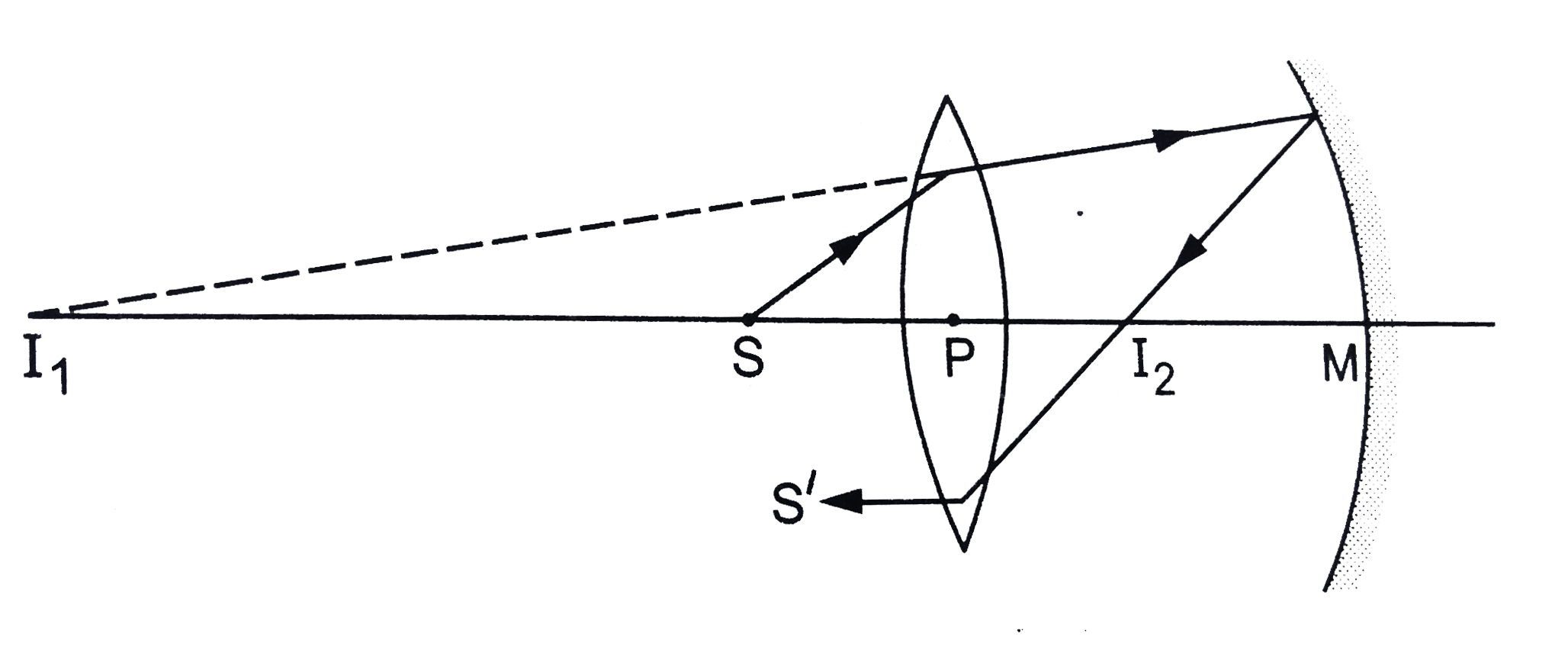 View Solution
View SolutionQuestion 22
A biconvex thin lens is prepared from glass (μ=1.5), the two bounding surfaces having equal radii of 25 cm each. One of the surfaces is silvered from outside to make it reflecting. Whee should an object be placed before this lens so that the image is formed on the object itself?
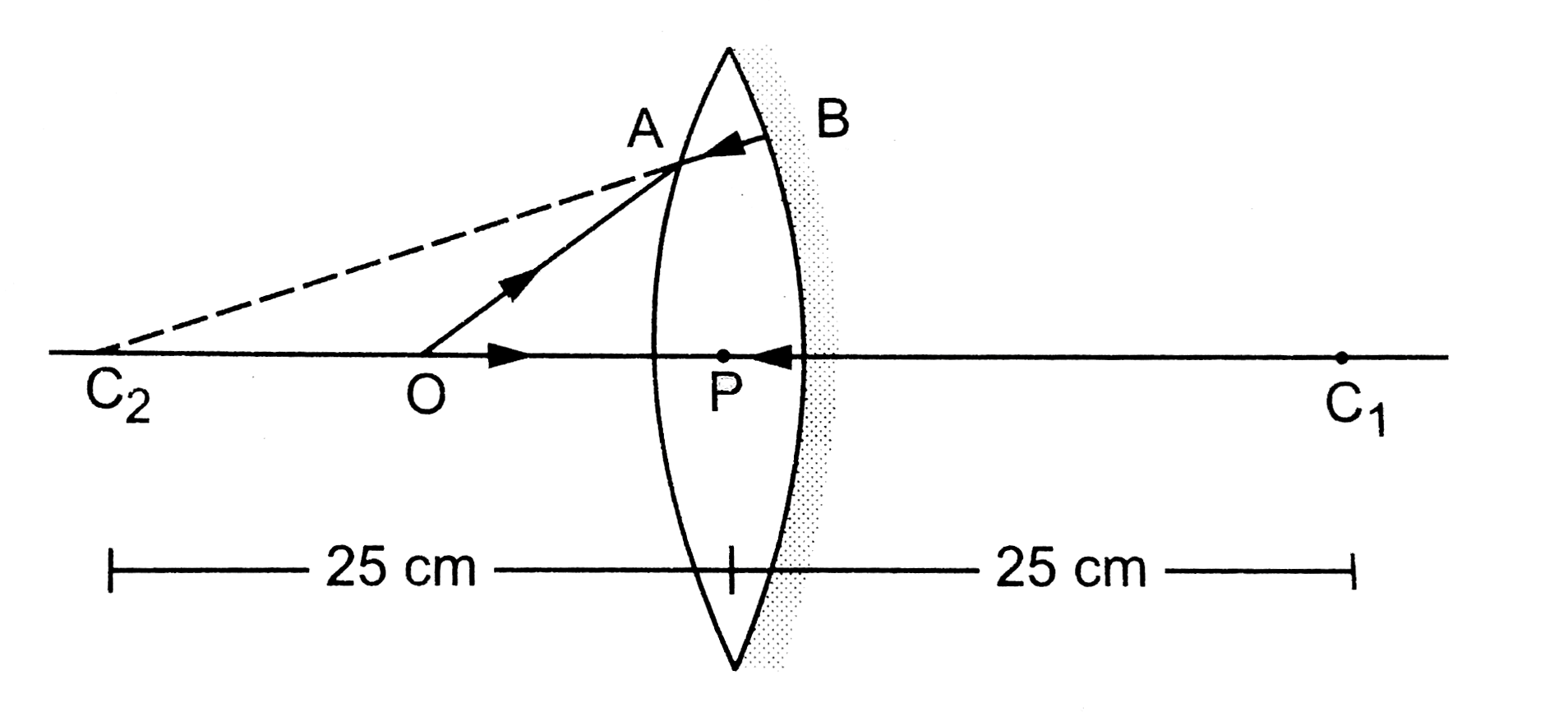 View Solution
View SolutionQuestion 23
A concave convex figure lens made of glas (μ=1.5) has surface of radii 20 cm and 60 cm. a. Locate the image ofan object placed 80 cm to the left of the lens along the principal axis. B. A similar lens is placed coaxially at distanc of 160 cm right of it. Locate the position of the image.
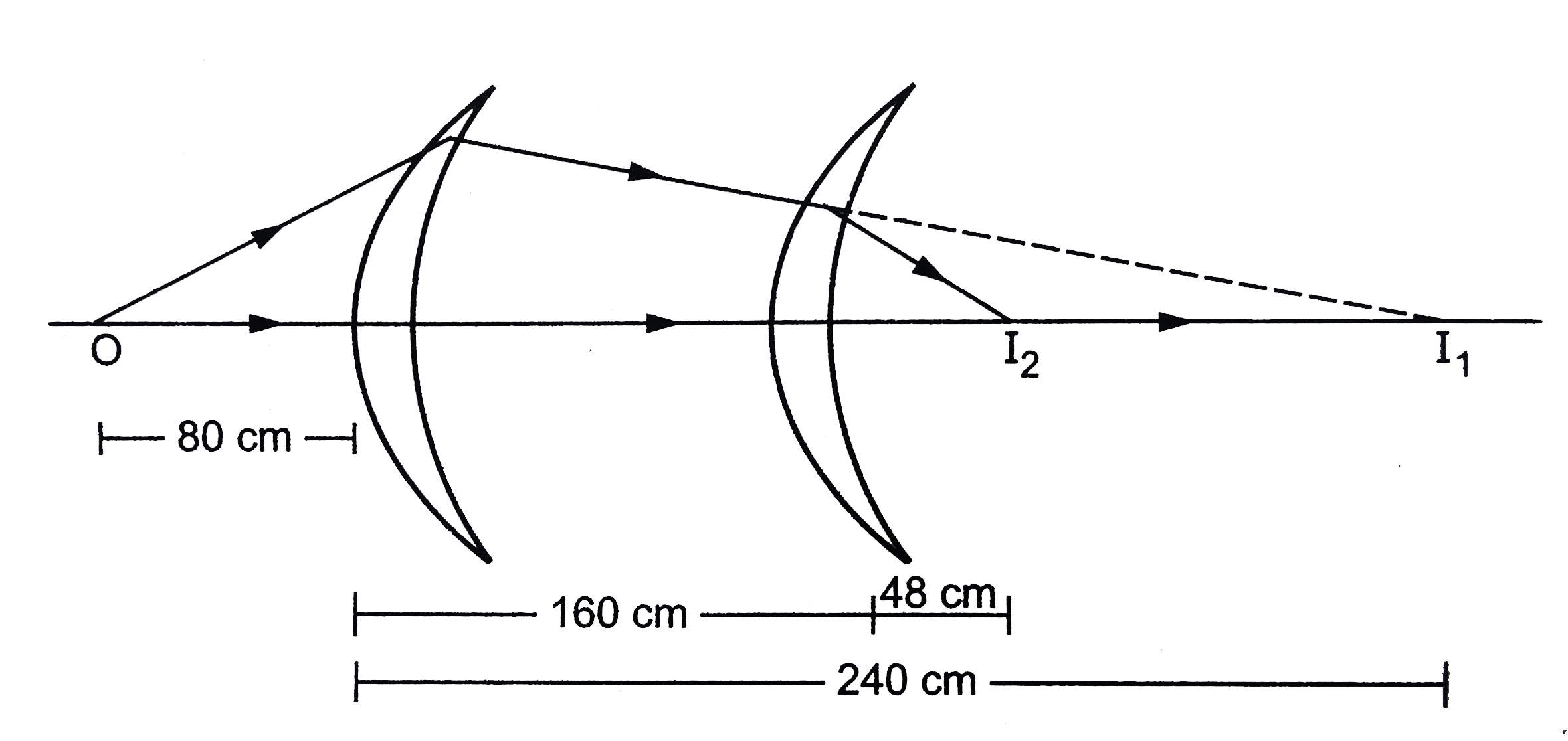 View Solution
View SolutionQuestion 25
A long cylindrical tube containing water in closed by an equinvex lens of focal length 10 cm in air. A point source is placed along the axis of the tube outside it at a distance of 21 cm from the lens. Locate the final image of the source. Refractive index of the materials of the lens =1.5 and that of water =1.33.View SolutionQuestion 26
A slide projector produces 500 times enlarged image of a slide on a screen 10 m away. Assume that the projector consists of a single convex lens used for magnification. If the screen is moved 2.0 m closer, by what distance should the slide be moved towards or away from the lens so that the image remains focused on the screen ? What is the magnification in this case ?View SolutionQuestion 28
Two convex lenses f focal length 20 cm each are placed coaxially with a separation of 60 cm between them. find the image of a distance object formed by the combination by a. using thin les formula separately for the two lenses and b. using the equivalent lens. Note that although the combination forms a real image of as distance object on the other side, it is equivalent to as diverging lens as far as the locatiion of the final image is concerned.View Solution
